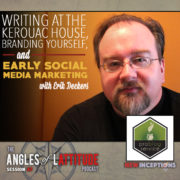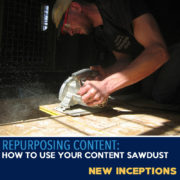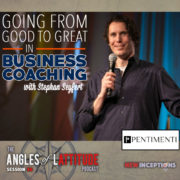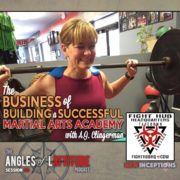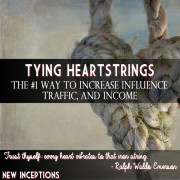AoL 037: Writing at the Jack Kerouac House, Branding Yourself, and Early Social Media Marketing with Erik Deckers
When people get to a certain level of success, it’s really hard to leave it behind. It takes so much time and resources to get to a certain level. That’s one reason why many professional athletes find it really hard to leave the game they’ve known since they were a kid. They’re not sure about what’s coming next and that can be very difficult.
For me, when I left academia and started figuring out what I wanted to do, I didn’t know where to start. The one thing I did know is that I had to put myself where opportunity would find me. So I started networking – A LOT – in Indianapolis. Getting to know many people that would ultimately have success themselves. Also getting to know people who would crash and burn and start rebuilding, or in some cases, give up on their passion altogether.
One of many people I met was Erik Deckers. I have to say that when I first met Erik, I thought that he’d be a good guy to get to know as we connected on a ton of things. Like me, he’s somewhat of a natural creative. He loves to write… and type (he has a collection of typewriters). And he’s able to help other companies do that through his online business: ProBlogService.com. Which he’s essentially a online ghost writer for other businesses. Needless to say that that particular service and him networking got him well known in Indy. Of course, it didn’t hurt that he wrote a few books with some prominent figures when he was here as well.
Anyway, fast forward a couple of years, I find myself back in Indy looking to reconnect with some folks that I knew from 2010. And I find that Erik is down in Orlando, FL! Having to essentially use the information he put into one of this books all over again.
In this session, we’ll learn more about the move to Orlando. We’ll also find out how he got into writing in the first place, how several of his books were conceived, and his thoughts on what the best ways are for people to be found on today’s internet.
If you’ve ever found yourself having to restart your career from scratch, you’re simply curious about what it’s like to write in the Kerouac House and what it’s all about, or just want to catch up with Erik, then you should get something out of this chat.
SPECIFICALLY, YOU’LL FIND OUT MORE ABOUT:
- More about the Jack Kerouac House (6:41)
- How the Jack Kerouac House has changed the scene of the Orlando literary scene. (13:00)
- How Erik got into writing (13:25)
- How his writing process is different than others (15:06)
- Why formats can play a big role in how you deliver your message. (16:13)
- How engineering is very similar to building a business (20:16)
- How one of the first big Twitter marketing books was created (21:57)
- How Erik played a vital role in helping Kyle Lacy meet his eventual wife, Rachel. (24:41)
- Where the idea for Erik and Kyle’s book, Branding Yourself, came from. (25:52)
- Why Erik likes to work with others when making books. (26:57)
- What book he’s been working on at the Kerouac House (29:20)
- Where Pro Blog Service came from (31:59)
- What Erik helps clients of his with (34:01).
- How people can become known on today’s internet (38:43).
- How Erik got involved in speaking at a TEDx event (45:22)
- Where Erik gets his passion for speaking (46:32)
- Who he thinks would be best suited to fight off a college sorority if they ever wanted to take over the world. (55:39)
- Who Erik would consider an example of success in his life. (1:01:42)
- What are some thoughts on starting a content based business (1:05:35)
- …and MUCH more.
Right click here and save-as to download this episode to your computer.
ITEMS and PEOPLE MENTIONED IN THIS EPISODE:
- Jack Kerouac House in Orlando
- Pro Blog Service
- Twitter Marketing for Dummies co-authored with Kyle Lacy (Amazon Link)
- ExactTarget (Now part of SalesForce)
- Branding Yourself (Amazon Link)
- No BullShit Social Media co-authored with Jason Falls (Amazon Link)
SHOW NOTE EXTRAS:
Erik’s TEDx Presentation in 2012:
How Not to Talk to Your Children About Sex
10 Professional Writing Secrets:
Intro to the book “Branding Yourself” with Kyle Lacy:
Thanks for Listening!
Thanks so much for joining us again this week. Have some feedback you’d like to share? Leave a note in the comment section below!
If you enjoyed this episode, please share it using the social media buttons you see at the top of the post.
Also, please leave an honest review for The AoL Podcast on iTunes! Ratings and reviews are extremely helpful and greatly appreciated! They do matter in the rankings of the show, and we read each and every one of them.
If you have any questions feel free to email them over via the email mentioned in the show or by our contact form.
And finally, don’t forget to subscribe to the show on iTunes, Stitcher, Soundcloud, and/or Google Play Music. It’s absolutely free to do so.
A huge thank-you to you guys for joining us!
Cheers!

